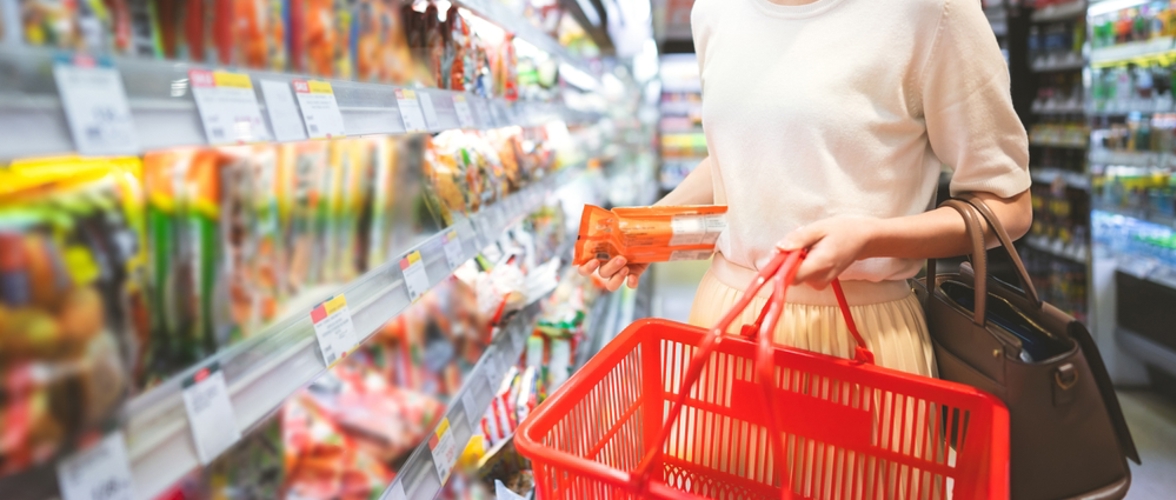The COVID-19 pandemic has profoundly affected the Supermarkets and Grocery Stores industry. Social distancing measures have accelerated the transition towards online channels, and firms have had to rapidly adapt to ensure the safety of consumers and employees. The threat of COVID-19 has become a strong motivator for consumers to adopt ecommerce habits, particularly those in older demographics.
The industry has now stabilised following a frenetic period of consumer hoarding earlier in the year. The industry’s outlook is uncertain, particularly as the availability of a COVID-19 vaccine remains unknown. Major players will likely pursue growth through emerging innovation opportunities. Significant innovations include changes in grocery delivery services, greater data availability through block-chain technology, integration with virtual assistants such as Apple’s Siri, hydroponic growing, and the removal of check-out counters.

COVID-19 recovery and 12 month outlook
Revenue in the Supermarkets and Grocery Stores industry is expected to grow at an annualised 3.6% over the five years through 2020-21, to reach $113.8 billion. As food is an essential purchase for consumers, the COVID-19 pandemic has had a weaker disruptive impact on revenue relative to other areas of the economy. In 2019-20, revenue grew at an above-average 4.6% due to consumer hoarding during initial lockdown conditions in March and April 2020. However, growth is expected to slow to a below-average 0.5% in 2020-21, as consumers forgo luxury grocery items and cut back on non-essential expenditure. Consumer sentiment is expected to remain negative throughout 2020-21, and household discretionary income is expected to decline by 3.1%.
Profit accounted for 4.2% of industry revenue in 2019-20. Profit across the industry is expected to fall below this level in 2020-21, as costs associated with the COVID-19 pandemic limit the margins of major players. These costs include store cleaning and sanitisation, investment in distribution centres, and the scaling up of ecommerce infrastructure, particularly for home delivery. While ecommerce is expected to be the industry’s primary focus in the coming years, the upfront costs associated with creating online capacity are expected to weigh on profit margins in the short term. Woolworths Group, which accounts for 37.6% of the industry, recorded 42% growth in online sales in 2019-20. Online sales accounted for $3.5 billion in revenue, equivalent to 5.5% of total sales.
Online innovation
Major players have already begun to incorporate online offerings, which are expected to become a default service over the next decade, rather than a niche offering for tech-savvy consumers. In addition to the established click-and-collect offerings of both Woolworth and Coles, additional delivery methods are also being expanded. These include drive-through pick up facilities, and partnerships with last-mile couriers including UberEATS, Sherpa, and Drive Yello. Economies of scale are expected to reduce the cost of these delivery channels over the next five years. This factor will lower delivery fees, which commonly dissuade price-conscious consumers from shopping online.

Supermarket facilities are expected to transition to a clicks-and-mortar operating model. In this scenario, local establishments will serve the dual purpose of store-fronts and distribution centres. While consumers will still be able to physically browse and assess products, click-and-collect, drive-and-collect, and home delivery services are expected to reduce consumer foot traffic. In addition to providing benefits to consumers, the shift to online services will also likely provide significant advantages to industry firms. Automated grocery packing is expected to cut down on labour expenses, which accounted for 7.7% of revenue in 2019-20.
The transition to online shopping is also anticipated to support data-collection capabilities, enabling firms to leverage insights into consumer behaviour to drive additional sales. Consumer loyalty schemes will likely become more powerful, as firms use data collected through online-shopping behaviour to identify sales opportunities and drive consumer engagement.
Customer experience
Significant innovations in customer experience are expected to become a key point of competition among industry firms over the next decade. One key development for consumers will likely be the integration of block chain technology into food supply-chains. Using this technology, in-store consumers would be able to scan a product to access detailed information on where it was made, what date it was delivered to the store, nutritional information, reviews from other customers and potential products to pair it with.
The arms race between Coles and Woolworths to deliver quality products that are fresh will also likely accelerate. In-store experiences to market freshness are anticipated to expand, such as the use of hydroponic technology to produce food in-store. A Woolworths flagship store in Sydney has already incorporated this technology into a ‘living lettuce’ offering, where products continue to grow until they are picked by a consumer. The speed at which products can be delivered from a point of origin to a grocery store, and the ability for consumers to access and compare that information, will likely become a major point of competition.
Supermarkets will also likely use in-store pop-ups, events and classes to enhance the consumer shopping experience and attract market share from competitors. In the United Kingdom, supermarket chain Waitrose has begun trials of an in-store dining experience, where customers can make a booking to sample meals prepared by local chefs using in-store ingredients. In Florida, Publix Super Markets offers a range of cooking classes taught by local restaurant owners and celebrity chefs. Other classes cover cooking techniques, wine and beer pairings, and regional food.
Convenience
Convenience will likely be a significant focus for major players, particularly as fewer opportunities remain available to out-compete on the basis of price or freshness. Technology advancement is rapidly opening up new avenues to enhance convenience for consumers. For example, integration with digital assistants such as Amazon Alexa or Apple’s Siri can enable consumers to order groceries through voice commands.
Grocery stores around the world are removing in-store checkouts through a variety of methods. In New Zealand, major players Foodstuffs (NZ) Limited is trialling the use of SMARTCART trolleys with inbuilt scanners, enabling consumers to buy a product simply by placing it in their trolley. AmazonFresh, a likely new entrant to the Australian industry in coming years, uses store-wide camera surveillance and integration with a consumer’s Amazon account to automatically track which products are picked up and removed from the store, with charges automatically billed to the customer. In New South Wales, Woolworths is trialling its Scan&Go offering, where users can scan a barcode with their smartphone and pay via an app.
Outlook
Innovation will remain a key focus in the Supermarkets and Grocery Stores industry. Revenue is expected to rise at an annualised 2.6% over the five years through 2025-56, to reach $129.6 billion. Revenue is expected to grow by 2.9% in 2021-22, as consumer sentiment improves and the effects of the COVID-19 pandemic dissipate. Major players benefited from Kaufland’s decision to cancel its expansion into Australia in January 2019. However, the threat of new entrants remains high, with Amazon particularly likely to disrupt the market over the next five years. Maintaining a focus on technological advancements, supply chain efficiencies, and new customer experiences will be vital to ensure success in the years ahead.
IBISWorld company reports used to develop this release:
IBISWorld reports used to develop this release:
- Supermarkets and Grocery Stores in Australia
- Supermarkets and Grocery Stores in New Zealand
- Hydroponic Crop Farming in Australia
For more information, to obtain industry reports, or arrange an interview with an analyst, please contact:
Jason Aravanis
Strategic Media Advisor – IBISWorld Pty Ltd
Tel: 03 9906 3647
Email: mediarelations@ibisworld.com






